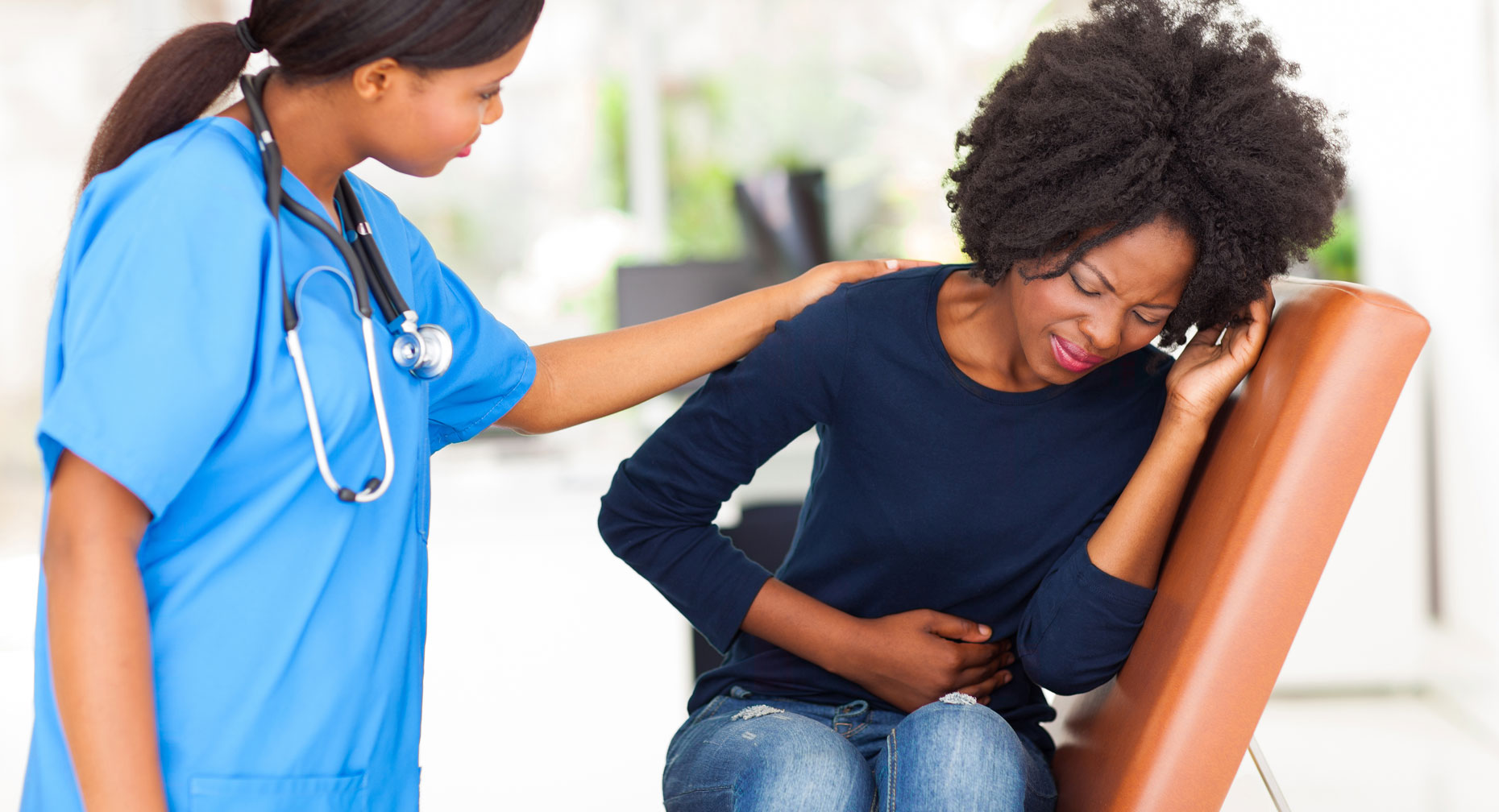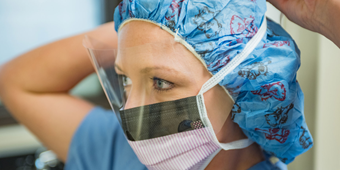- Baby on the Way
- Bladder and Pelvic Health
- Getting Pregnant
- Infertility
- Labor and Delivery
- Uniquely Female
When to Worry About Uterine Fibroids

Find Your Perfect Match
Answer a few questions and we'll provide you with a list of primary care providers that best fit your needs.
Uterine fibroids are the most common pelvic tumor in women. The good news is that they’re almost always benign (non-cancerous) and are not life-threatening. And having children is still possible.
Obstetrician/gynecologist Larry Holland, DO, explains what you need to know about fibroids and infertility.
What Are Fibroids?
A fibroid is a non-cancerous growth, typically found in the uterus, says Dr. Holland. Fibroids occur when smooth muscle cells in the wall of the uterus multiply and form a mass. Up to 80 percent of women have fibroids, but not everyone has symptoms. That means you may have them and never even know it.
“Estrogen is like a fertilizer to fibroids,” says Dr. Holland. “As long as your body produces estrogen, fibroids can grow. Once your estrogen supply stops (when you’re post-menopausal), the estrogen supply stops, and fibroids stop growing. They may even shrink a little bit, but they never go away.”
What Are the Symptoms?
“Depending on the size of the fibroid, you may feel pain and pressure in your pelvis. Fibroids can push on your bladder, causing you to urinate more frequently, and making it difficult to fully empty your bladder,” explains Dr. Holland. Or fibroids sometimes push on the colon, causing constipation. Symptoms may also include backache and leg pain.
Heavy menstrual cycles with prolonged bleeding are common with fibroids. “As the bleeding gets heavier, if you aren’t treated, the increase in blood loss can lead to anemia and fatigue,” Dr. Holland explains. Sometimes a transfusion is necessary. “Severe anemia can cause something we call pica, which causes intense cravings for ice, starch, or even dirt.”
“If you have fibroids that outgrow their blood supply, they may start to degenerate or the tissue will start to die, and that also causes pretty severe pain,” Dr. Holland adds.
What Increases the Risk Of Getting Fibroids?
- Age. Up to 80 percent of women may have fibroids by age 50.
- Family history. If a family member had fibroids, this increases your risk. If your mother had fibroids, your risk of having them is about three times higher than average.
- Ethnic origin. African-American women are more likely to develop fibroids than other ethnicities.
- Obesity. Women who are overweight are at higher risk for fibroids. For very heavy women, the risk is two to three times greater than average.
- Eating habits. Eating a lot of red meat increases the risk of fibroids, as does drinking alcohol. Eating lots of vegetables and fruit may reduce your chance of developing fibroids.
Do Fibroids Affect Fertility?
Fibroids shouldn’t prevent you from getting pregnant, says Dr. Holland. “I see lots of patients who are pregnant with fibroids. Unless the fibroids are interfering with the lining of the uterus, they shouldn’t affect fertility. But if you have fibroids and are unable to get pregnant, having the fibroids removed can increase your chances.”
During pregnancy, fibroids may prevent your baby from getting into the appropriate position with the head down, explains Dr. Holland. Babies are more likely to be breech in these instances because the fibroids restrict the baby’s ability to move around and get into position.
When Do Fibroids Need To Be Treated?
Treatment options depend on the severity of your symptoms, your age, and whether or not you want to have children in the future.
Available treatments range from medicines to surgery.
- Iron supplements. Women with heavy menstrual bleeding can take iron supplements to prevent anemia.
- Anti-inflammatory medicines. The doctor may prescribe these medicines for pelvic pain and discomfort.
- Anti-hormonal medicines. Medicines that block estrogen or reduce estrogen levels can prevent and reduce fibroids. Anti-progestins can also be effective.
- Different types of procedures are sometimes used to treat fibroids. These treatments can remove the entire uterus, the uterine lining, or just the fibroids themselves. Available treatments include:
- Myomectomy. This is a conservative surgical approach that removes the fibroids and leaves the uterus intact. This may allow a future pregnancy, but the baby will need to be delivered via cesarean section, says Dr. Holland.
- Uterine fibroid embolization. This procedure cuts off the blood supply to the fibroids by blocking the arteries that deliver blood to the fibroid. It is unclear how this procedure may affect the ability to get pregnant in the future.
- Hysterectomy. The entire uterus is removed. Pregnancy is not possible after hysterectomy.
Your fibroids may never go away completely, says Dr. Holland. “During a procedure to remove fibroids, your doctor will remove everything that he or she can see. But that means smaller ones may be left behind. They will now have an increased blood supply and they’ll probably get bigger because of it.”
Find Your Perfect Match
Answer a few questions and we'll provide you with a list of primary care providers that best fit your needs.
Source: Larry Holland, DO, Premier Women’s Center; American Society for Reproductive Medicine; Office on Women’s Health




